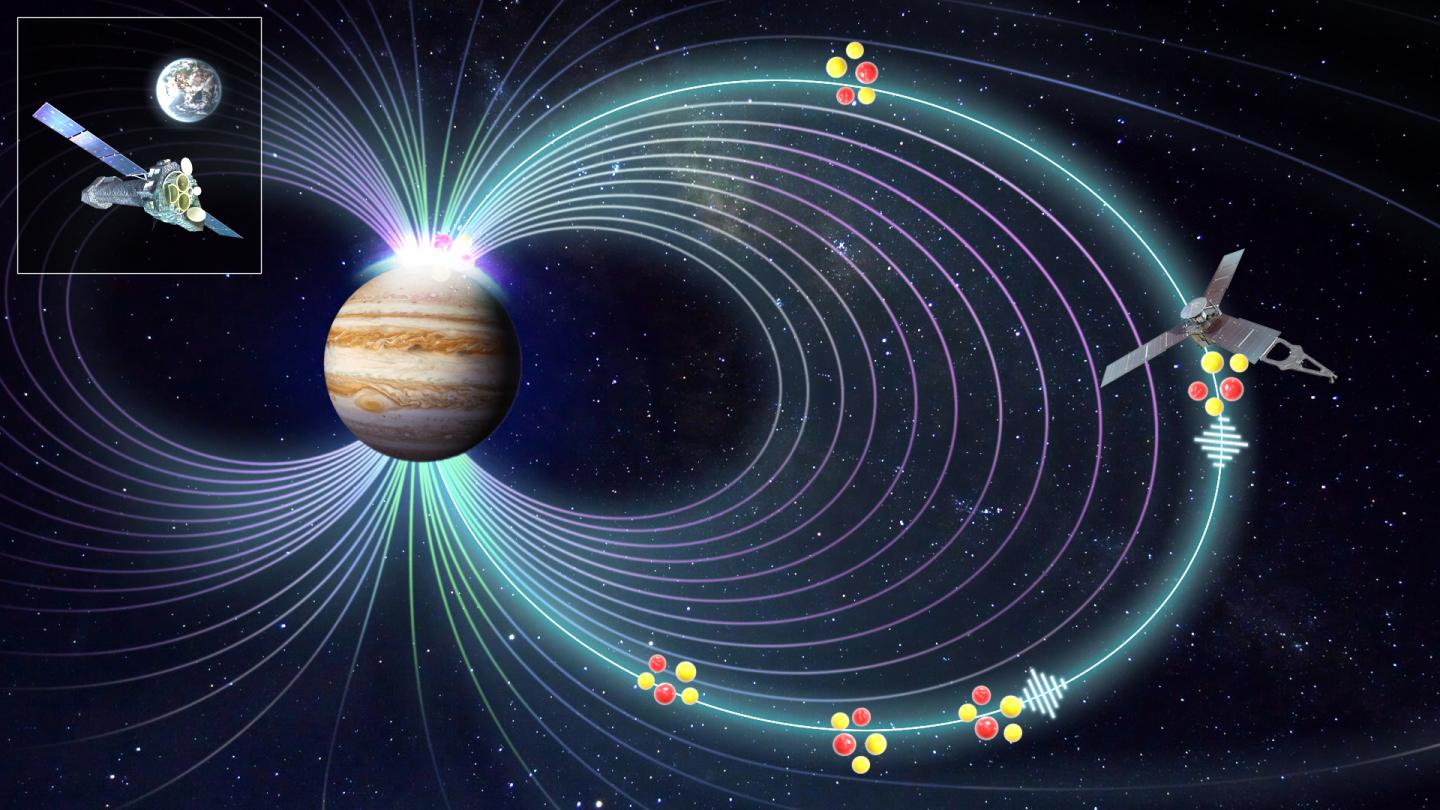Scientists finally solve mystery of Jupiter’s spectacular X-ray auroras
Researchers say they have ended a 40-year quest for answers about the planet’s powerful bursts of light

Your support helps us to tell the story
From reproductive rights to climate change to Big Tech, The Independent is on the ground when the story is developing. Whether it's investigating the financials of Elon Musk's pro-Trump PAC or producing our latest documentary, 'The A Word', which shines a light on the American women fighting for reproductive rights, we know how important it is to parse out the facts from the messaging.
At such a critical moment in US history, we need reporters on the ground. Your donation allows us to keep sending journalists to speak to both sides of the story.
The Independent is trusted by Americans across the entire political spectrum. And unlike many other quality news outlets, we choose not to lock Americans out of our reporting and analysis with paywalls. We believe quality journalism should be available to everyone, paid for by those who can afford it.
Your support makes all the difference.Scientists have solved the decades-long mystery over how Jupiter produces regular-as-clockwork auroras of X-ray light.
The X-rays are part of the gigantic planet’s bursts of visible and invisible light triggered by charged ion particles interacting with its atmosphere.
A similar phenomenon occurs on Earth, which creates the aurora borealis – also known as the Northern Lights – that is seen during the colder months in the northernmost countries.
But Jupiter’s auroras are much more powerful than Earth’s in that they release hundreds of gigawatts of energy. This energy from Jupiter’s north and south poles is so intense that it would be enough to provide power briefly for every human.
A research team, co-led by University College London (UCL) and the Chinese Academy of Sciences in Beijing, has finally figured out how these auroras are created after 40 years.
The scientists found that the X-rays were triggered by regular vibrations in Jupiter’s magnetic field lines that surround the planet in vertical loops that connect from its north pole to its south pole.
These vibrations create waves of plasma – ionised gas – that send heavy ion particles “surfing” along the magnetic field lines until they smash into the planet’s atmosphere, and release colossal amounts of energy in the form of X-rays.
The X-ray bursts were produced every 27 minutes in the scientists’ observations.
The charged ion particles, that collide with Jupiter’s atmosphere, originate from volcanic gas pouring into space from giant volcanoes on Io, one of Jupiter’s 79 moons.
This gas becomes ionised – its atoms are stripped of electrons due to collisions in Jupiter’s immediate environment – and forms a doughnut ring of plasma around Jupiter known as the Io Plasma Torus.

Dr William Dunn, of UCL Mullard Space Science Laboratory, said: “We have seen Jupiter producing X-ray aurora for four decades, but we didn’t know how this happened. We only knew they were produced when ions crashed into the planet’s atmosphere.
“Now we know these ions are transported by plasma waves – an explanation that has not been proposed before, even though a similar process produces Earth’s own aurora.
“It could, therefore, be a universal phenomenon, present across many different environments in space.”
Researchers combined close-up observations of Jupiter’s environment by NASA’s satellite Juno – which has been orbiting our solar system’s biggest planet since 2016 – with simultaneous X-ray measurements from the European Space Agency’s XMM-Newton observatory, which is in Earth’s orbit.
These observations were carried out continuously for a 26-hour period.
The scientists found a clear correlation between waves in the plasma detected by Juno and the X-ray auroral flares at Jupiter’s north pole recorded by X-MM Newton. The researchers then used computer modelling to confirm that the waves would drive the heavy ion particles towards Jupiter’s atmosphere.

Professor Graziella Branduardi-Raymont said: “X-rays are typically produced by extremely powerful and violent phenomena such as black holes and neutron stars, so it seems strange that mere planets produce them too.
“We can never visit black holes, as they are beyond space travel, but Jupiter is on our doorstep. With the arrival of the satellite Juno into Jupiter’s orbit, astronomers now have a fantastic opportunity to study an environment that produces X-rays up close.”
The reason why Jupiter’s magnetic field lines vibrate regularly is unclear, but there are theories that vibrations could be caused by solar wind or from high-speed plasma flows within the planet’s magnetosphere – the area controlled by this magnetic field. Jupiter’s magnetosphere is about 20,000 times stronger than Earth’s.
Dr Zhonghua Yao said that similar processes are likely to be happening around Saturn, Uranus, Neptune and “probably exoplanets as well”.
The new study has been published in the journal Science Advances.
Join our commenting forum
Join thought-provoking conversations, follow other Independent readers and see their replies
Comments